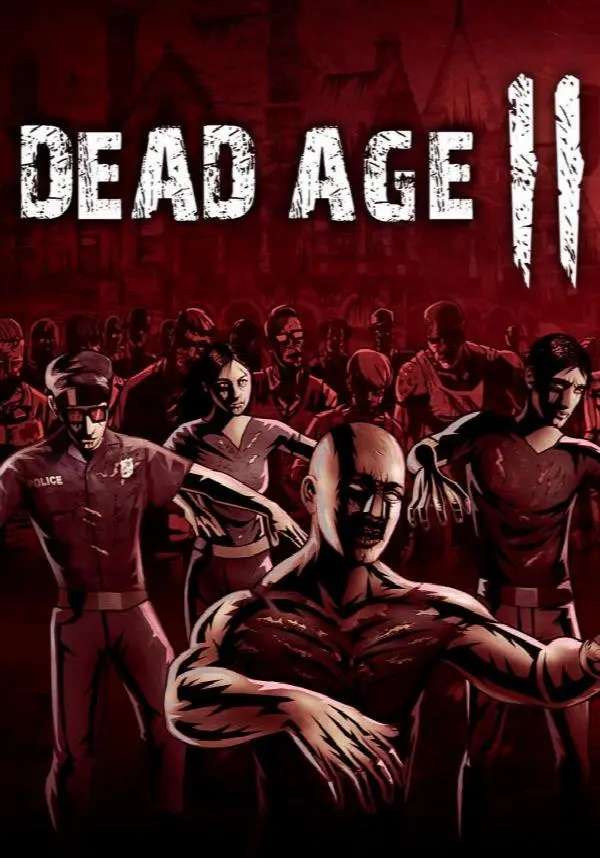Успешная инди-игра с элементами выживания Dead Age возвращается! Не так много игр могут предложить такую смесь из ролевой игры, рогалика, быстрых пошаговых боев и выживания.
Функционал игры
Более глубокая история без привязки к сюжетной линии предшествующей части: даже если вы не играли в "Dead Age", вы всё равно сможете без труда вникнуть в интересную череду событий "Dead Age 2".
Улучшенная система боя (как если бы "Final Fantasy-X" встречалась с "Darkest Dungeon") с быстрыми, но стратегическими сражениями при поддержке до 24 навыков.
Система репутации фракций: повысьте свой авторитет среди основных фракций, чтобы пожинать его плоды и улучшить торговлю.
3D управление базой: распределение задач между выжившими, изготовление предметов и расширение возможностей лагеря для улучшения качества производства снаряжения.
Компактный открытый мир: свободное исследование карты мира с 80 детализированными локациями для поиска ценных ресурсов.
Решения с последствиями: ваши решения неумолимо влияют на историю. В "Dead Age 2" вас ждёт шесть разнообразных концовок.
Rogue-Like элементы: случайные 3D-события, не знающие пощады! Если вы умрете, то сможете приобрести улучшения, разблокированные в предыдущих прохождениях для вашей следующей игры. Выберите один из 3 уровней сложности для комфортной игры по вашему предпочтению.
Через 10 лет после первой вспышки зомби-апокалипсиса, группа лагеря Джека ушла в город Свободы, где было разработано лекарство от зомби-вируса, но в каждой бочке мёда всегда есть ложка дёгтя, а порой мёда нет и вовсе. В регионе появились новые фракции, которые ведут постоянную и беспощадную борьбу за господство: безжалостные военные, хитрые контрабандисты и Независимые - группа гражданских лиц, создавшая свою фракцию. Когда-то их лагерь был захвачен ордой нежити и теперь немногие оставшиеся в живых борются за продовольствие и ценные ресурсы в суровом мире, постоянно оглядываясь через плечо на банды грабителей и плотоядных мертвецов.
Несмотря на большое преимущество пошаговой боевой системы "Dead Age" по сравнению с играми, основанными на тактике, заключающейся в более быстром продвижении, механика "Dead Age 2" эволюционировала.
Теперь персонаж может использовать до 24 навыков в бою. Изменяйте тактику во время боя, чтобы мгновенно получить преимущество над зомби и враждебно настроенными выжившими. Направляйте бойцов в передний ряд, чтобы защитить союзников дистанционной атаки от нападающих, а также используйте турели, охотничьих собак и даже тигров, а также множество нового оружия.
Посещайте аванпосты других фракций, чтобы торговать, брать задания и улучшать свою репутацию с этими фракциями. Улучшение репутации с крупными фракциями региона откроет доступ к лучшему оборудованию и снаряжению. Негативная репутация с одной фракцией может привести к конфронтации с ней, но и к вознаграждению другой фракцией.
Ваша 3D база - это главный центр операций. Здесь вы можете создавать предметы и поручать выжившим задания по строительству, возводить и модернизировать помещения для улучшения обороны и качества жизни, а также разблокировать усовершенствованные предметы и даже повысить урожайность.
В новом открытом мире вы можете свободно исследовать карту с более чем 80 детализированными локациями. Помимо природных красот, в "Dead Age 2" появились новые закрытые локации, такие как больницы, бункеры, школы, торговые центры и магазины армейских запасов.
Решения, которые вы принимаете во время игры, могут оказать значительное влияние на развитие сюжета с участием трех выживших фракций, романтические отношения персонажей и приблизить вас к одной из шести концовок игры!
Как и предшественник, "Dead Age 2" генерирует на карте случайные события, приводящие к разнообразным последствиям, но на этот раз эти события полностью отображаются в 3D. 3 уровня сложности и перманентная смерть могут в любой момент привести к потере союзника. Если ваш главный герой станет жертвой апокалипсиса, вы будете вынуждены начать новую игру, для которой можно будет приобрести улучшения и преимущества, разблокированные в предыдущих прохождениях.
Зарабатывайте рeпутацию, чтобы получить доступ к уникальным предметам и оборудованию фракций, и иметь возможность разблокировать уникальные концовки - всё это даёт "Dead Age 2" отличную реиграбельность!






























